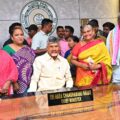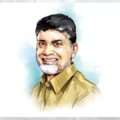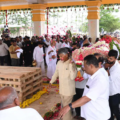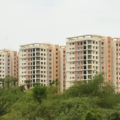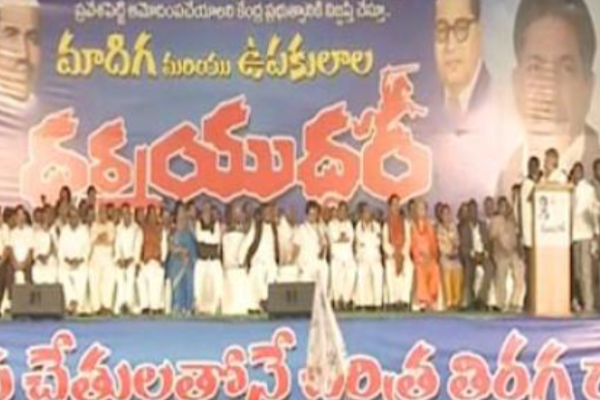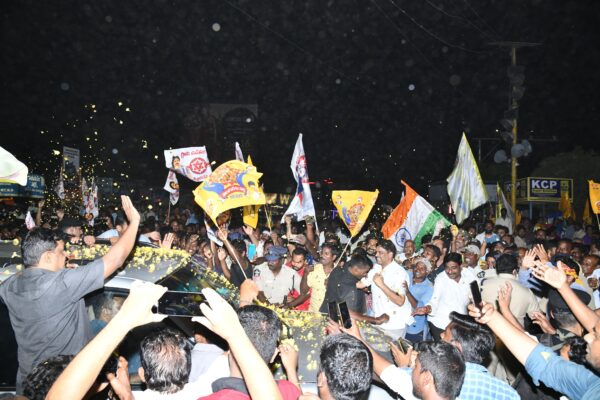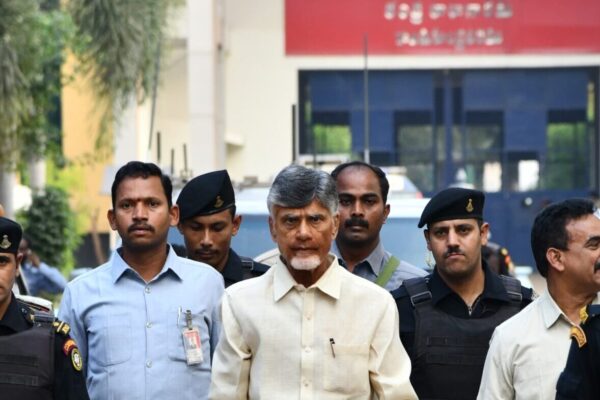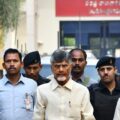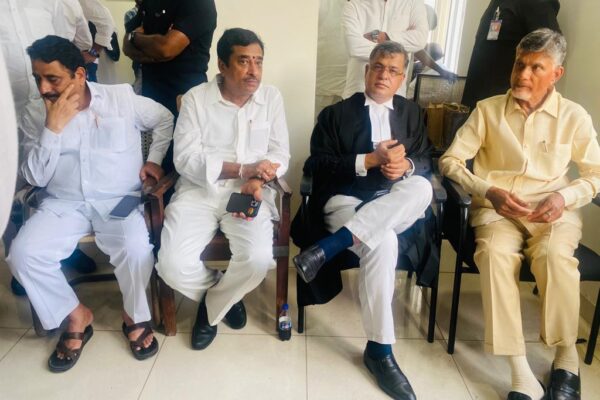
Urban Solutions (Singapore) Mag | February 2016
In September 2015, Chief Minister of Andhra Pradesh state in India, N. Chandrababu Naidu, visited Singapore to encourage companies to participate in the development of Amaravati, the state’s future capital. In this interview with CLC adjunct editor Koh Buck Song, Mr Naidu shared his vision of sustainable smart cities, and his insights from working with Singapore to create the Amaravati Master Plan.
“Cyberabad” is a part of Hyderabad city that attracted many investments in Information Technology (IT). What was your strategy in attracting such investments?
In the early 2000s, Andhra Pradesh was not developed—we had low employment, and many other problems. We had a financial deficit, so we had a problem even with regular expenditure. I thought: “How can we develop? How we can create the best economy?” After many brainstorming sessions, I decided on IT.
We started an iconic business district called HITEC [Hyderabad Information Technology and Engineering Consultancy] City that attracted many companies. I went to America, and spent 14 days visiting the corporate heads of companies such as Microsoft. I built friendships and asked them to come to Hyderabad. Everything was built over a period of time—world-class infrastructure, IT companies, and so on. If you create one IT job, the indirect employment created will be five or six jobs, be it the hospitality, transport, or residential and commercial sectors. I named the area Cyberabad.
Will you apply some of these strategies to Andhra Pradesh in the future?
We cannot replicate exactly what we did for Cyberabad, for Andhra Pradesh. Before Cyberabad, our software development was not mature. Over time, that has become a reality.
Now in India, we’re importing huge quantities of hardware and electronics. I am planning and creating an excellent ecosystem in hardware so that Andhra Pradesh can become a hub for hardware and electronics.
We have a strategic location, with around 1,000 kilometres of coastline. On the east coast of India, ours is the only state with such abundant opportunities. My vision is to promote port-based industries to make Andhra Pradesh a logistics hub. Just like in Singapore, where you built a port, then an airport, and then a city, till it becomes a very dynamic city. And then, to connect everything up, backward and forward integration, at a world-class level.
Hyderabad is not all about technology; there’s also a lot of emphasis on the natural ecosystem. Could you talk about its green aspects?
My thinking was that we not only had to create employment and also wealth for the people, but the city must be sustainable. This is important. So, I started to emphasise greenery in public places, and I encouraged families to grow more plants. I used to plant, three to four lakh [hundred thousand] trees a day, like a mass movement. Now Hyderabad is one of the best cities, a green city, compared to others in India.
What is the key takeaway in developing Hyderabad, for other city leaders who also want to develop economically vibrant and liveable cities?
Every city has this ambition—the issue is the capacity to do it. In India, there are huge opportunities in the urban area; as we can see all over the world, urban areas can create more economic growth and employment. So, the question is how to make the urban areas more liveable and sustainable, and then you can create wealth and employment for all the people.
Every policymaker has to concentrate on urban development.
Recently, India’s Prime Minister Narendra Modi set up a sub-committee with nine Chief Ministers, for the Swachh Bharat Mission [“Clean India Mission”]. Now we are working on a report to see how to implement this mission. In Singapore, with waste you are generating energy—it has even become a source of wealth. In India, tonnes of waste lie on the roads everywhere, and create so many problems. This is what we are studying now: to see how to convert waste into energy, manage sewage treatment and how best to use water, just like you do in Singapore with NEWater, which everybody is prepared to drink.
This is the new spirit that has been brought in, regarding the treatment of pollution. I am very happy for this. We are planning to also go into this in a big way. We’re going to submit a report to the government of India, to create new institutions to do this job—Swachh Bharat, Swachh Andhra Pradesh, Swachh Karnataka, and so on.
One of the big ideas in India is the smart cities plan. What are you hoping to achieve for Andhra Pradesh?
Our Prime Minister has announced the plan for 100 smart cities. Besides giving incentives, they are rating and ranking the cities continuously. So naturally, there will be competition among states and local bodies.
This is already happening today. Every city should become a smart city, and also a liveable one. Then employment will take place, a vibrant economy will come, sustainability will be there, and people can enjoy life. So, we are working in this direction. We want to provide better amenities and better infrastructural facilities in smart cities.
Let’s talk about Amaravati, the new capital of Andhra Pradesh, and its Master Plan, which aims to become “the people’s capital”. What does this mean, and what do you hope to see?
In the mid-90s, Hyderabad was not a toprated city. There was land in Hyderabad but no water, no infrastructure, and no connectivity. Then I started to build it up, one by one. After the bifurcation of Andhra Pradesh state, we didn’t have a capital. So now, we are trying to convert a crisis into an opportunity. To build a capital is a rare, once-in-a-lifetime opportunity.
So, I sent a call out to the people, and the people responded very well. In India, land acquisition is a big problem but I was able to acquire nearly 33,000 acres of land with voluntary land pooling. This is historic. Nowhere else in the development of the country has this been done.
I have very good relations with the Singapore government, and I admire this government because of its integrity, efficiency and continuous, consistent development. So I came to Singapore, and requested help to prepare a Master Plan to build a world-class city. There are so many cities today that are very good, but Singapore is a truly liveable city. Other cities may be more beautiful, but Singapore is sustainable and liveable; it has law and order, greenery, shopping, offices, urban transportation, everything. This is how I want to build one of the best cities in Andhra Pradesh.
What is your vision for Amaravati, which you have been positioned as “the Venice of the East”?
Oh, I am very happy, this is a very good coincidence. We have the Krishna river, which is a perennial river. In recent times, we had a problem with the water supply as some projects upstream were being constructed. But there is the River Godavari that we were able to link to the Krishna river to get plenty of fresh water from the forest areas. Now, I want to build one more barrage at the riverfront of about 30 kilometres at Amaravati. This is the beauty of this city—there is not only very beautiful greenery, but also very fertile land. Greenery will be very powerful, very beautiful. So I want to go for greenery. I can also connect the river to the city, to make this the “Venice of the East”.
I am planning for aspects including pollution control and beautification. I’m planning for a blue-green city, and taking in the best international consultations to do this job.
How are you ensuring support from the people, including those in rural areas, who have to make this shift to the urbanised future of Andhra Pradesh?
Human psychology is the same, all over the world. The question is: how are we going to inspire the people, and motivate them for better things? If you do well, they will follow you. And at the same time, there is medium-term and long-term planning that you have to do.
In Singapore, you have had only one government for 50 years. The people are supportive because this government is delivering. In India, it is also the same. In the past, I was ahead of the times. There were some miscalculations, and I lost [an election]. Now, I am balancing everything— how to go about urbanisation, and, at the same time, how to develop villages, even remote ones.
My aim is always to keep the people happy, by creating wealth, and then for the poor, to give them sustainable welfare. Ultimately, inclusive growth is my concept, because everybody should rise above poverty.
What are your thoughts of Singapore, especially since you and your delegation have visited Singapore to study aspects of the development of the city?
People say Singapore has a higher cost of living but they know it is peaceful and the economy is good. The place is consistently growing and the people are happy. There is stability and security—anybody can go anywhere, with no fear for public safety.
In Singapore, there is not only beauty, but functionality. Even the parks have become health centres with beautiful greenery and walking tracks where you can spend time and enjoy the space. Everything is well-placed, I would say.
As for housing, people all over the world want a house—big or small. If I have a house, after some time, I’d want to upgrade, and then upgrade even further. That is the facility that the Singapore government has given to its people. I really appreciate it. So I am also thinking along similar lines for Andhra Pradesh but we need knowledge to achieve this.
What would Singapore’s key contribution be in this area, then?
When there is hardware, you must have the software to match. In both areas, Singapore is very strong, whether in political, economic or social reengineering. Singapore’s government officials’ capabilities and bandwidth for management are very good. We want to learn more in areas such as technology and management, ways to revive urban areas apart from Amaravati, and also training for our Indian Administrative Service officers. More capacity-building has to take place. Human beings will have extraordinary strength if you motivate them; if you also give them better skills, they will do wonders.
My idea is that, by getting the best practices around the world, I can make Andhra Pradesh a liveable state. By 2022, we want to be among the top three cities in India; by 2029, we want to be number one, and by 2050, the best destination in the world for technology, infrastructure, and also human resource development, where people enjoy life. I am laying a very strong foundation now. If I implement all my plans, they will have a tremendous impact on the common man.
(Courtesy: Urban Solutions (Singapore), Issue 8)
